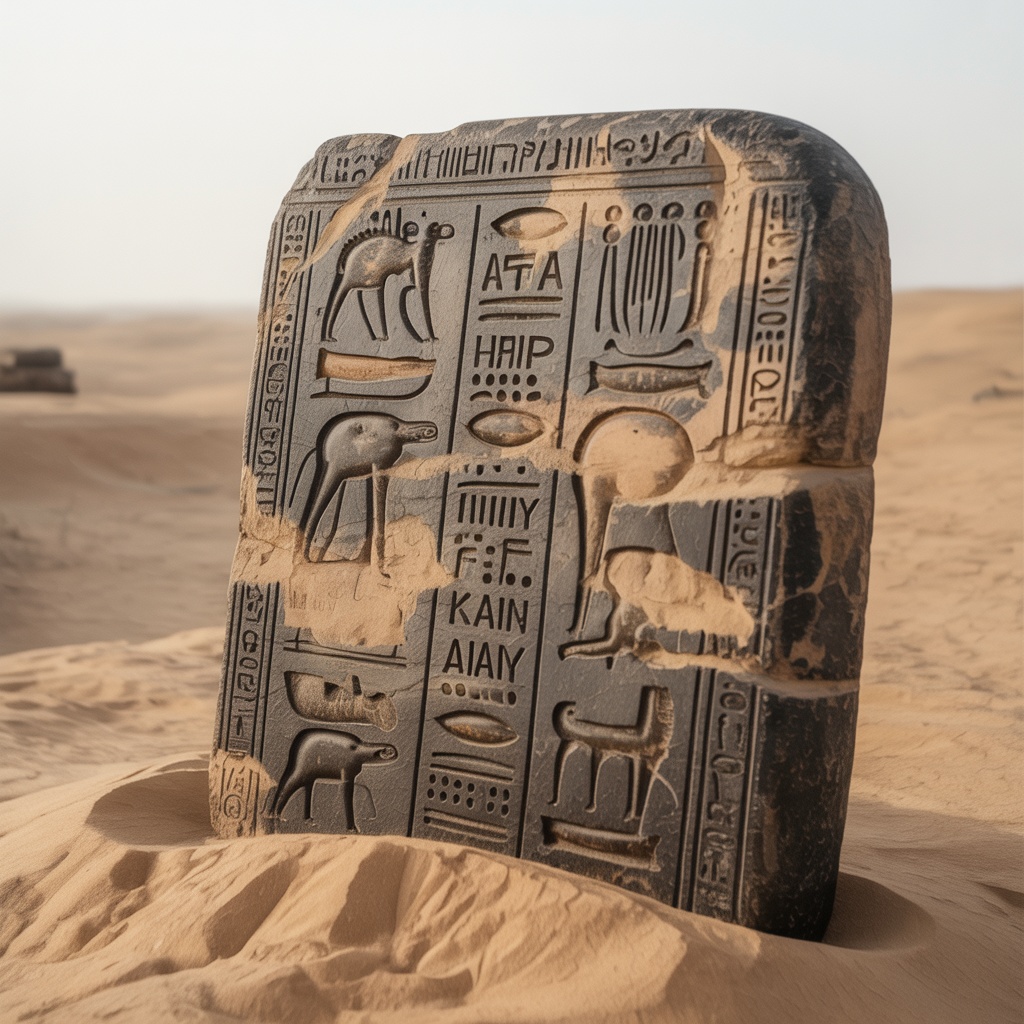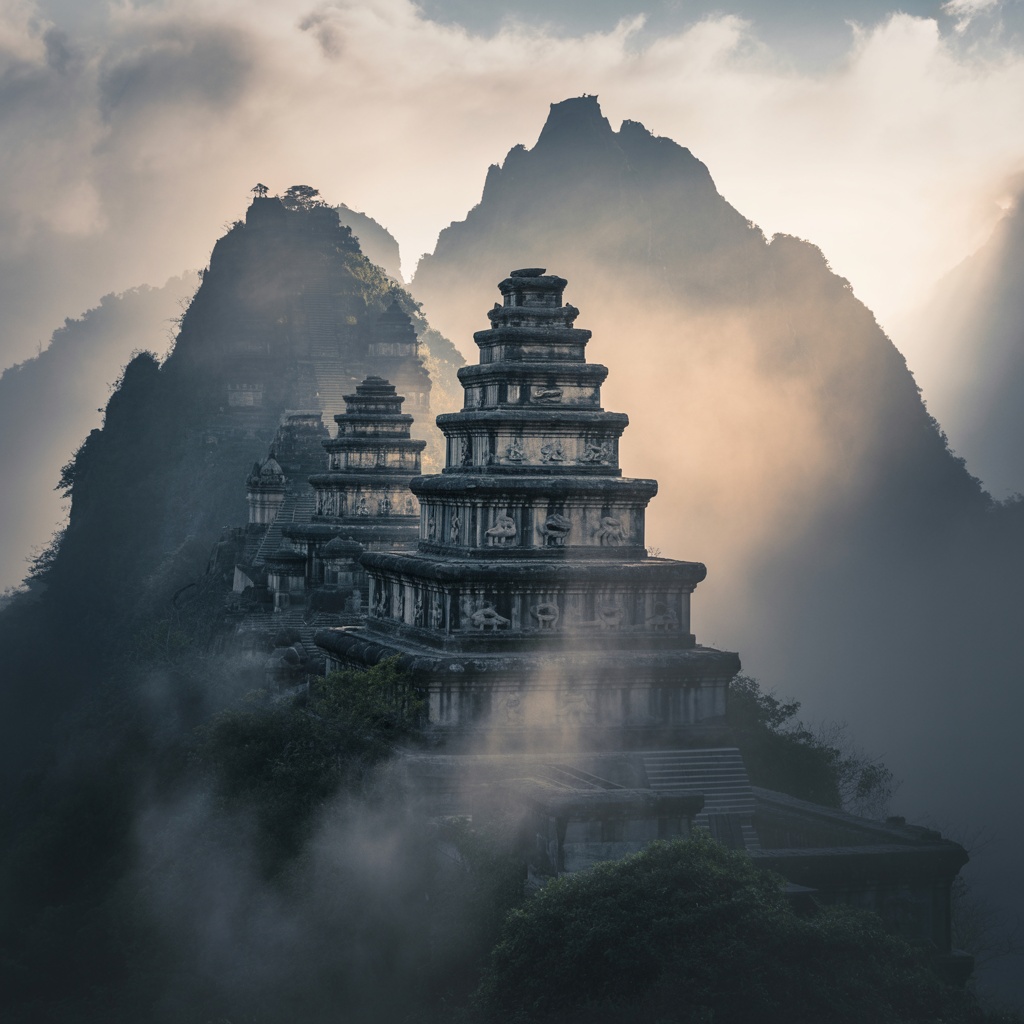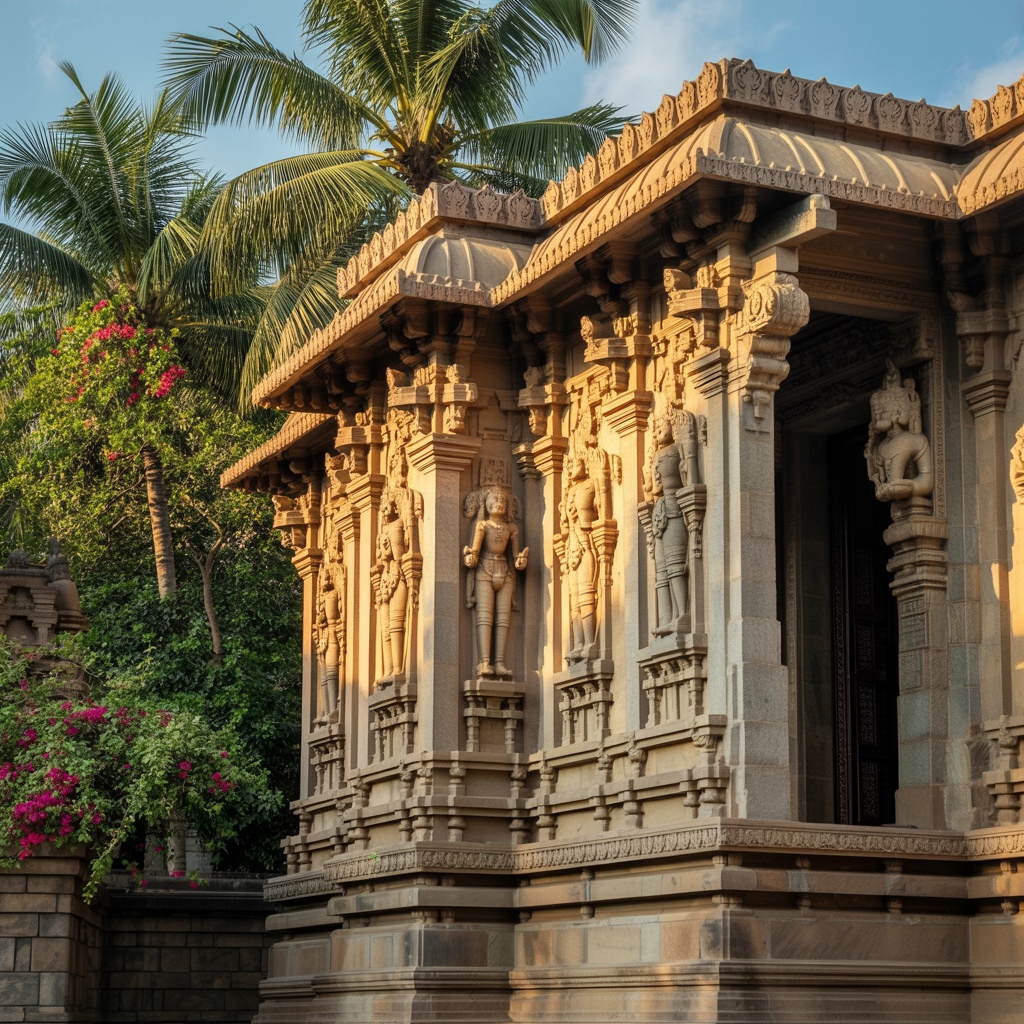The Ambalappuzha Sri Krishna Temple stands as one of Kerala's most revered religious sites, attracting thousands of devotees and cultural tourists annually to experience its architectural beauty, spiritual atmosphere, and the famous palpayasam (sacred rice pudding) offering that carries a legendary origin story. Located in the Alappuzha district of Kerala, this ancient temple exemplifies the distinctive Kerala style of Hindu temple architecture whilst serving as an active centre of worship and cultural preservation.
As cultural heritage tourism specialists with extensive experience organising temple expeditions across South India, we recognise Ambalappuzha Temple as exceptional both for its religious significance and architectural merit. This comprehensive guide explores the temple's history, architectural features, religious practices, cultural importance, and practical visiting information for travellers seeking authentic engagement with Kerala's living religious heritage.
Historical Origins and Development
The precise founding date of Ambalappuzha Sri Krishna Temple remains debated among historians, with various sources placing its establishment between the 15th and 17th centuries CE. Local tradition attributes the temple's construction to the local ruler Chembakassery Pooradam Thirunal Devanarayanan Thampuran, though some historical evidence suggests the site may have hosted religious activities for even longer periods.
The temple gained particular prominence during the reign of the Travancore Kingdom, which governed much of southern Kerala from the 18th century onwards. The Travancore rulers, devoted Krishna worshippers themselves, patronised Ambalappuzha Temple extensively, funding renovations, establishing regular festival schedules, and ensuring the continuation of daily rituals and offerings that persist to the present day.
The Legendary Palpayasam Story
The temple's most famous tradition—the daily distribution of palpayasam (sweet rice pudding)—originates from a legend involving Lord Krishna disguised as a sage who challenged the local king to a chess game. The king confidently accepted, agreeing to give the sage whatever he requested if defeated. The sage asked for rice grains to be placed on the chessboard, doubling with each square—seemingly modest but mathematically resulting in impossible quantities.
When the king inevitably lost and realised he could never fulfil his promise, the sage revealed himself as Lord Krishna and mercifully modified the debt: the king and his descendants must prepare and distribute sweet palpayasam to devotees daily in perpetuity. This tradition continues unbroken, with thousands of portions distributed free to visitors every day, making it one of India's most distinctive temple prasadam (blessed offering) traditions.
Architectural Features and Temple Layout

Ambalappuzha Temple exemplifies the Kerala style of Hindu temple architecture, characterised by specific features distinguishing it from temple traditions in other regions of India. Understanding these architectural elements enhances appreciation for the site's cultural and historical significance.
The Kerala Temple Style
Kerala temples typically feature copper-plated roofs with multiple tiers creating distinctive pyramid-like profiles. Wooden structures predominate in covered walkways and auxiliary buildings, whilst the central shrine (sreekovil) uses stone construction. The entire complex is usually surrounded by high walls creating enclosed sacred precincts that emphasise separation from the mundane external world.
At Ambalappuzha, the sanctum sanctorum houses the main deity—Lord Krishna depicted in the Parthasarathy form (as charioteer to Arjuna during the Mahabharata war). The idol, cast in a special alloy called panchaloha (five-metal composition), displays characteristic iconographic features including the deity holding a whip and conch shell, referencing Krishna's role in the epic Kurukshetra battle.
The Valiya Gopuram and Temple Entrances
The temple's entrance tower (gopuram), whilst modest compared to the towering gopurams of Tamil Nadu temples, displays finely executed stucco work and traditional Kerala architectural elements. The entrance leads to an outer courtyard containing the temple tank (kulam), subsidiary shrines to other deities, and the distinctive flagstaff (dwajasthambam) that marks the site's sacred status.
The kulam or temple tank serves multiple ritual functions: providing water for ablutions, hosting certain festival activities, and contributing to the temple's microclimate and aesthetic atmosphere. The stepped design allows devotees to descend for ritual bathing before entering the inner sanctum.
Interior Decorations and Art
Within the temple complex, visitors encounter numerous examples of traditional Kerala mural art, wood carvings, and stone sculptures. These decorative elements depict scenes from Krishna's life—his childhood pranks in Vrindavan, the Govardhan hill lifting episode, the destruction of various demons, and his role in the Mahabharata—providing visual education in Hindu mythology for devotees and visitors.
The wooden ceilings and pillars feature intricate carvings showing floral motifs, divine figures, and geometric patterns created by skilled artisans employing techniques passed down through generations. These decorative elements serve both aesthetic and didactic purposes, beautifying the sacred space whilst communicating religious narratives.
Religious Significance and Worship Practices
Ambalappuzha Temple functions primarily as an active place of worship where traditional Hindu rituals continue according to ancient prescribed practices. Understanding these religious dimensions provides essential context for visitors approaching the temple respectfully and gaining insight into living Hindu traditions.
Daily Rituals and Pujas
The temple follows a strict schedule of daily rituals (nityapuja) performed by hereditary priests (Brahmin families designated as temple officiants). These rituals begin before dawn with the Nirmalya Darshanam (viewing the deity adorned with the previous day's decorations) and continue through multiple services including Usha Puja (morning worship), Pantheeradi Puja (noon worship), and Athazha Puja (evening worship).
Each ritual involves specific protocols: waking the deity, bathing the idol with various substances (water, milk, honey, yoghurt, ghee, and finally water again—this five-substance bath called panchamritam), adorning with fresh garments and ornaments, offering food items, performing arati (waving of lamps), and distributing prasadam to devotees. These rituals connect contemporary practice to ancient Vedic traditions whilst adapting to regional Kerala customs.
Special Offerings and Vows
Devotees visit Ambalappuzha to fulfil specific religious purposes: seeking blessings for life events (childbirth, marriages, business ventures), performing thanksgiving after wishes granted, conducting annual family worship traditions, or simply experiencing darshan (auspicious viewing of the deity). The temple accommodates various special offerings (vazhipadu) that devotees can sponsor: feeding Brahmins, funding elaborate pujas, contributing to temple maintenance, or donating towards the famous palpayasam distribution.
The palpayasam itself functions as prasadam—sanctified food that has been offered to the deity and therefore carries divine blessing. Consuming prasadam is considered spiritually beneficial, transferring divine grace to the devotee. The mathematics legend associated with the palpayasam adds cultural significance to this already religiously meaningful practice.
Annual Festivals and Cultural Events

Ambalappuzha Temple hosts numerous annual festivals that attract visitors from across Kerala and beyond. These festivals combine religious devotion with cultural performance, creating spectacular events that preserve traditional arts whilst serving spiritual functions.
Champakulam Moolam Boat Race
One of the most significant events associated with the temple is the annual arrival of the deity from Champakulam Sree Krishna Swamy Temple via boat procession. This event, occurring during the Malayalam month of Mithuna (June-July), features the famous snake boats (chundan vallams) of Kerala—enormous wooden boats requiring over 100 rowers, creating a spectacular cultural display combining religious pilgrimage with traditional boat racing.
The Champakulam boat brings the deity to Ambalappuzha for a joint celebration, symbolising the connection between these two important Krishna temples. The boat race attracts enormous crowds who gather along the waterways to witness this unique merger of religious tradition and cultural performance.
Aarattu Festival
The annual Aarattu festival marks the ceremonial bath of the temple deity in the nearby waterbody, accompanied by elaborate processions, traditional music performances, and cultural programmes. This festival typically occurs in the Malayalam month of Meenam (March-April) and represents the most important annual event in the temple calendar.
During Aarattu, the deity is carried in grand procession on decorated elephants, accompanied by traditional Kerala percussion ensembles (chenda melam), fireworks, and thousands of devotees. The festival period sees intensified ritual activities, special pujas, and cultural performances including Kathakali dance-drama, Ottanthullal (traditional Kerala art form), and classical music concerts.
Krishna Janmashtami
Krishna's birthday (Janmashtami) receives special celebration at Ambalappuzha with midnight worship services marking the auspicious birth moment, elaborate decorations, special food offerings, and devotional singing. Devotees fast during the day and break their fast only after the midnight celebrations, participating in continuous chanting and devotional songs throughout the night.
The Cultural Heritage of Kerala Temple Architecture
Ambalappuzha Temple serves as an excellent example for understanding Kerala's distinctive temple architectural traditions, which evolved differently from temple architecture in other regions of India due to Kerala's unique historical, environmental, and cultural circumstances.
Material and Environmental Adaptations
Kerala's heavy monsoon rainfall and humid tropical climate influenced temple construction methods significantly. The use of sloping tiled roofs, drainage systems, and elevated structures helps protect against moisture damage. Wood features prominently in Kerala architecture due to abundant forest resources, though this makes temples vulnerable to decay and requires periodic renovation and replacement of wooden elements.
The lack of suitable stone for elaborate sculpture in most of Kerala (unlike the granite-rich areas of Tamil Nadu or sandstone regions of North India) led to greater emphasis on wood carving and mural painting as decorative mediums. This material constraint generated Kerala's distinctive artistic traditions that characterise its temples.
Ritual Architecture and Sacred Geography
Kerala temple layouts follow principles from the Tantrasamuccaya, an influential architectural and ritual text specific to Kerala, authored by the 15th-century scholar Chennas Narayanan Namboodiri. This text prescribes specific proportions, orientations, and spatial relationships for temple elements based on complex mathematical and astrological calculations.
The enclosed courtyard design creates graduated levels of sanctity: outer areas accessible to all visitors, intermediate zones for devotees, and the innermost sanctum restricted to priests. This spatial hierarchy materialises concepts of purity and divine presence, guiding visitors through progressively more sacred spaces as they approach the deity.
Visiting Ambalappuzha Temple: Practical Information
Location and Access
Ambalappuzha is located approximately 14 kilometres south of Alappuzha (Alleppey) town in Kerala's backwater region. The temple is easily accessible from Kochi (Cochin), approximately 60 kilometres north, via National Highway 66. Regular bus services connect Ambalappuzha to major Kerala cities. The nearest railway station is Alappuzha, with frequent trains from Kochi and Thiruvananthapuram (Trivandrum).
Visiting Hours and Darshan Times
The temple opens for darshan from early morning (typically 4:00 AM) until late evening (approximately 8:30 PM) with a midday break (roughly 12:30 PM to 4:00 PM). These timings vary slightly based on the season and special occasions. The evening darshan (after 5:00 PM) is particularly popular when the deity appears in elaborate decorations illuminated by traditional oil lamps, creating an atmospheric religious experience.
Dress Code and Temple Etiquette
As an active place of worship, Ambalappuzha Temple maintains traditional dress codes and behavioural expectations. Men should wear traditional dhoti or modest Western attire (long trousers, shirts with sleeves). Women should wear sarees, salwar kameez, or modest Western clothing ensuring shoulders and knees remain covered. All visitors must remove footwear before entering the temple premises—free shoe storage facilities are provided.
Inside the temple, maintain quiet behaviour, avoid pointing at deities or sacred objects, ask permission before photographing (photography restrictions may apply in certain areas), and follow priests' instructions regarding movement through sacred spaces. Mobile phones should be silenced or switched off within the inner sanctum areas.
Experiencing the Famous Palpayasam
The distribution of palpayasam occurs daily after the evening puja (usually around 7:00-8:00 PM), though timing varies. The prasadam is distributed free to all visitors regardless of religion, caste, or nationality—embodying the temple's inclusive approach to sharing divine blessings. Arrive with clean hands and accept the offering with respect, consuming it within the temple premises as is customary with prasadam.
The palpayasam preparation uses traditional methods: rice, milk, jaggery (unrefined cane sugar), ghee (clarified butter), and often cardamom and cashews, cooked slowly to achieve the correct consistency and flavour. Thousands of litres are prepared daily in the temple kitchen using enormous vessels, maintaining a culinary tradition spanning centuries.
Cultural Tourism and Temple Exploration
Ambalappuzha Temple rewards visitors who approach it not merely as a tourist attraction but as a living religious and cultural institution. Understanding the historical, architectural, and spiritual dimensions enhances appreciation for this significant site within Kerala's heritage landscape.
Combining Temple Visits with Kerala Backwaters
Ambalappuzha's location in Kerala's famous backwater region allows combining temple tourism with exploration of the unique aquatic landscape that characterises this area. Traditional houseboat cruises, village homestays, and kayaking expeditions through the backwater canals provide complementary experiences showcasing Kerala's natural environment and traditional lifestyles.
Several other significant temples exist in the Alappuzha region, including the Mannarasala Sree Nagaraja Temple (dedicated to serpent deities), Chettikulangara Devi Temple, and Mullakkal Rajarajeswari Temple, allowing comprehensive temple tourism circuits. Our cultural heritage expedition services arrange multi-day Kerala temple tours combining architectural study, religious education, and cultural immersion.
Temple Arts and Traditional Performances
During major festivals, the temple premises host performances of traditional Kerala art forms. Kathakali (classical dance-drama depicting mythological stories through elaborate makeup, costumes, and stylised gesture language), Koodiyattam (Sanskrit theatre recognised by UNESCO as intangible cultural heritage), and Ottanthullal (social satire poetry performance) appear regularly. These performances preserve ancient artistic traditions whilst entertaining and educating audiences.
For visitors interested in ancient Indian architectural achievements, comparing Ambalappuzha's Kerala style with temple architecture in other regions provides valuable insights. The technological achievements at Delhi's Iron Pillar site or the monumental temple architecture at Angkor Wat offer contrasting approaches to sacred architecture across Asian cultures.
Preservation and Contemporary Challenges
Like many historic religious sites in India, Ambalappuzha Temple faces challenges balancing preservation of ancient structures and traditions with contemporary pressures including increased visitor numbers, funding constraints for maintenance, and changing social contexts affecting traditional practices.
Structural Conservation
The temple's wooden structures require periodic replacement due to decay from Kerala's humid climate and termite damage. Maintaining traditional construction methods and materials becomes challenging as skilled artisans decrease in number and traditional materials become expensive or difficult to source. Archaeological and conservation organisations work with temple authorities to document traditional techniques and support preservation efforts.
Sustaining Ritual Traditions
Continuing complex daily rituals and annual festivals requires financial resources, trained priests familiar with traditional procedures, and community support. The temple depends on devotee donations, government support, and revenue from various offerings to sustain its operations. Ensuring younger generations learn traditional practices presents ongoing challenges as social and economic changes affect traditional occupational patterns.
Supporting Sustainable Temple Tourism
Visitors can support Ambalappuzha Temple's preservation and continued functioning through:
- Making appropriate donations for temple maintenance and ritual activities
- Respecting temple rules and traditional practices
- Engaging knowledgeable guides who provide authentic cultural education
- Purchasing offerings and prasadam through official temple channels
- Participating respectfully in festivals and religious events
- Supporting local communities and traditional artisans in temple vicinity
